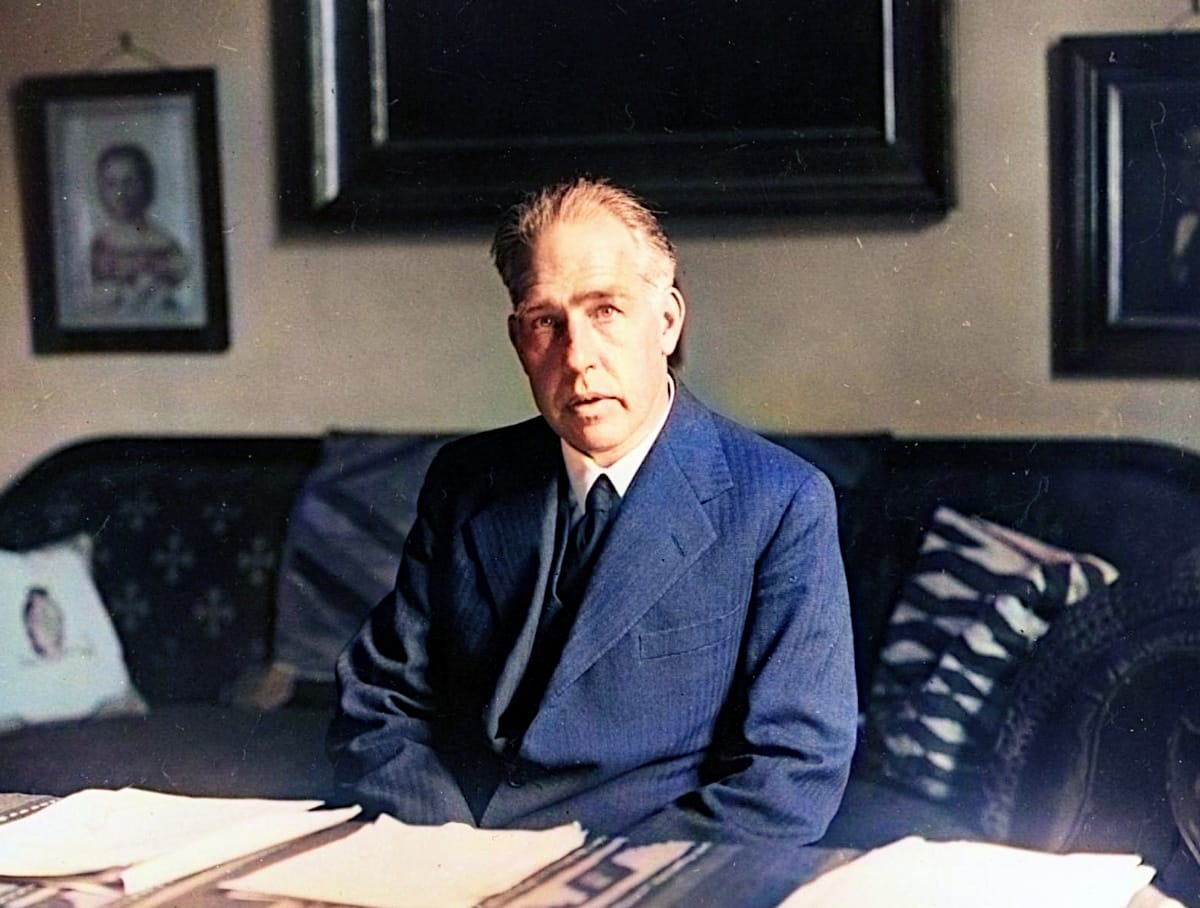There is a popular story in literature and on the Internet about an ingenious solution to a physical problem that the young Niels Bohr allegedly proposed in the presence of another venerable scientist, Ernest Rutherford. We checked whether this incident really happened to Nobel laureates.
According to the plot of the popular science story, Rutherford was once asked to help with the certification of a student who proposed a somewhat curious solution to a common exam problem. The classic answer to the question “How can you measure the height of a building using a barometer?” consists of comparing the readings of the device on the roof and on the ground, but the student suggested lowering it down on a rope and then measuring its length. Another option described by the examinee involved dropping a barometer from the roof, measuring the time of fall and calculating the height using the appropriate formula. Both answers were formally correct, but neither of them confirmed the student’s competence, so he received a low score. After that, the student gave several more non-trivial solutions to the same problem: on a sunny day, compare the length of the shadows of the barometer and the building, use the barometer as a ruler on the wall of a building, as a pendulum to calculate gravity on the roof, and also as a payment for information from the building manager. At the end of the story, it turns out that the student knew about the standard solution to the problem, but thus protested against the stereotyped thinking imposed by the education system. This student was allegedly the future Nobel Prize winner in physics, Niels Bohr.
This story can be found in many motivational books (for example, “Going beyond", "Tyranny of stupidity", "Lessons of wisdom. Proverbs"), meetings of interesting cases ("Tales and stories") and on social networks. In particular, on Facebook there are publications of the same text with this story on 7200, 1700 And 1600 reposts at the time of writing this analysis.
Bohr's early analytical abilities do not raise any doubts - he was still in childhood demonstrated an interest in mechanics, and in high school I became seriously interested in mathematics. As a student, Bohr honored gold medal from the Royal Copenhagen Academy of Sciences for his work on surface tension.
However, the fact that Bohr knew Rutherford at that time seems very doubtful. Dane entered at the University of Copenhagen in 1903, received a master's degree in physics there in 1909 and defended his doctorate in 1911. Rutherford, a native of New Zealand, 1898–1907 led Department of Physics in distant Canadian Montreal, and since 1907 settled in Manchester, England. Thus, he should not have been involved in any way in Bohr's student life in Denmark.
They met later. In September 1911 Bor arrived to Cambridge to work under Joseph Thompson at the Cavendish Laboratory. It was then, while visiting his friends in Manchester, that the Dane met Rutherford personally. Mutual interest and respect led to Bohr working in the Manchester laboratory under Rutherford from March to July 1912, and later becoming his close friend. This development of events is in no way compatible with the widespread legend about the exam. On the official website Niels Bohr Archive, which contains rich biographical material, does not mention any similar events in the life of the Danish physicist.
Where does the popular tale come from? Judging by the Google Books service, Bohr and the University of Copenhagen began to appear in it only in late 20th century, and before that she had been walking around in one form or another for decades various publications sometimes as a pseudo-scientific joke, sometimes as an illustration of non-standard thinking. To a certain extent, the essay by the American scientist and teacher Alexander Kalandra “Angels on the tip of a needle"(1959), in which the story was told in the first person, that is, the role of Rutherford was played by Calandra himself. It was this option that, back in the 20th century, found its way into many books in various disciplines and caused serious academic discussion on the importance of a creative approach in science and education.
However, Kalandra was not the author of the popular story. In the 1950s, the comic story was already Fine known thanks to the popular periodicals of those years. The oldest "Verified" publication of the barometer story found dates back to December 1941, when it appeared in an American magazine Power Plant Engineering. The note stated that the story was sent to the editor by a certain S.E.W., who heard the problem and its unusual solution from his lecturer at the University of North Dakota. The article mentioned only one non-standard method (hanging a barometer on a rope), and instead of a building the chimney of a local power plant appeared, but over time the story was enriched with new solutions, and the scene changed. It is not known for certain who and when first started the joke about the barometer, but it definitely has nothing to do with the Danish physicist Niels Bohr.
Cover photo: Wikimedia Commons
Read on topic:
If you find a spelling or grammatical error, please let us know by highlighting the error text and clicking Ctrl+Enter.






